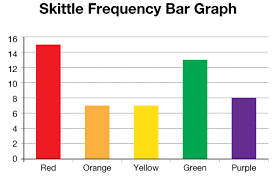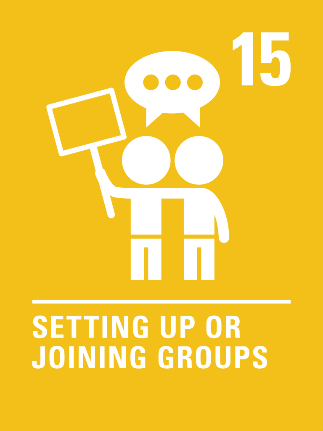P5/6A and P6GS W/C 8.06.2020
Good morning everyone! This is our penultimate (good word for you to look up in the dictionary) week where we will be suggesting learning activities for you to try at home before Health Week starts!
Please take the time to go and have a look (or another look if you have already been on) at the Health Week page on our website. We will have two weeks of activities for you there and we are adding information for you as and when we can. There will be a mixed focus of fitness, nutrition and mental health, there will also be some of the traditional, favourite activities. https://blogs.glowscotland.org.uk/my/bishopmill/bishopmill-primary/health-week-2020/
Remember to log your exercise and activities on Travel to Tokyo. https://www.getset.co.uk/travel-tokyo/log-activity
We will meet on Wednesday 10th June at 4pm. Log onto Glow and go to our class page. You will see a blue box appear at 4pm that says, ‘Join Now’, just click on there and we will be waiting. This week come and share something with us; it might be a poem, a joke or a song. We aren’t able to see you, so dance or gymnastics won’t work! We are also keen, as always, to hear what you have been up to.
Below are the suggested activities for the week ahead. Remember to keep those pictures coming.
Starters
Something a little bit different this week to warm up our brains! Can you work out which country is shown by these images? Countries Rebus Puzzle
Can you use the Emoji’s to crack the code? Emoji Code Breaker
How good is your ‘Space’ knowledge? If you don’t know the answers, research them to help you complete the crossword. Try not to use the answer sheet. Space Crossword Puzzle
Maths
 This week we suggest that you might want to work on your Information Handling skills. The activities include collecting, recording, reading and analysing data. Remember that it is important to look carefully at the scale or key on a graph. Here is a PowerPoint to help you recap on the different types of graphs and charts that there are. Types of Graph and Charts
This week we suggest that you might want to work on your Information Handling skills. The activities include collecting, recording, reading and analysing data. Remember that it is important to look carefully at the scale or key on a graph. Here is a PowerPoint to help you recap on the different types of graphs and charts that there are. Types of Graph and Charts
These short clips are a great way to recap on how to collect data and why collecting specific data can help us. They might also give you ideas for one of the activities.
- Conducting a survey https://www.bbc.co.uk/bitesize/clips/zgxhyrd
- Data handling and interpretation https://www.bbc.co.uk/bitesize/clips/zgtn34j
- Tallying https://www.bbc.co.uk/bitesize/clips/zw3r87h
- How to interpret a bar chart https://www.bbc.co.uk/bitesize/clips/z28jxnb
Here is a selection of activities for you to choose from.
Analyse and record data from the largest earthquakes. Earthquakes
Analyse and record data from some of the biggest birds in the world. Wingspans
Can you read and record data from different types of graphs and charts? Data and Analysis
Another activity that you could try is to conduct your own survey, record the answers and present your data in a graph. Here is a little video to remind you how to do this. https://www.youtube.com/watch?v=ReW4MPqXTvA
You could conduct a survey on anything you want. It could be the colours of skittles in a packet, the colour of cars that pass your window during a period of time or your extended families favourite crisp flavours. Remember that you need to ask suitable questions if you choose to survey a group of people. If surveying a group of people is too tricky during these times, this resource already has some information prepared for you. You just need to tally and present the data. Favourite Sport Data
Here is some graph paper for you to draw your graph on. Graph Paper
Writing
Thank you for all those great Chapter Ones that you have been sending us this past week. You have all got wonderful imaginations and what scary storylines you have come up with!
This week we are going to continue to write an extended story that will have three chapters. This week you are going to focus on writing chapter 2: the middle part of your story where we get to find out what everything is all about. You should continue to use your senses to describe what your character can see/hear/smell/feel to help guide your reader around your story.
Last week, your story ended with your character in their dangerous/scary place about to go and investigate something that caught their attention. This week your story will begin with your character figuring out what this thing was or is. In other words, chapter 2 will begin where chapter one left off.
Week 2/Chapter 2
- Continue to think about your character and setting. Does your character change in any way throughout this chapter? (clothes becoming grubbier? Tear stained face? Heart pounding with anticipation or fear?)
- Decide where your chapter is going to end. Just like last week, you need to know your ending before you begin… (this way you are more likely to get there!)
- If you have not finished, continue to design a front cover for your story. Remember to include the title of your book, the author and illustrator of the book and a picture that will grab your reader’s attention.
Once you have got all that straight in your head you are ready to start writing. Here are a few things to consider:
- P1: What was the interesting thing that caught your character’s attention? Describe this in detail: what does it look like? Exactly where was it found? Does it move? How does it move? How does your character feel when they discover what it is?
- P2: Does your setting change in any way now that this new and interesting item/object/person has been discovered. E.g. do funny noises start to happen? Does your setting become darker/colder/gloomier? Does the wind pick up? Etc…
- P3: Your Character should be led to a different part of your setting in this paragraph. Something should happen to take them elsewhere. Maybe the object/thing/person that they have discovered has magical powers? This paragraph should be really descriptive and tell your reader all about what the character is experiencing as they move throughout their setting. (Spiders webs, stone steps, temperature etc…)
- P4: When your character reaches their new setting there should be something truly horrible waiting for them. (We will leave this to your fantastic imaginations!) This thing should have your character’s heart racing and their eyes wide with fear. By the end of this paragraph your character should be in real danger that it looks like they will not be able to get out of…)
- See
- Feel
- Hear
- Smell
Use your character’s senses to guide your reader around your story.
Remember there is a file in our Teams page of a model story. Our story is called The Green Lady. It is in the file called Mrs Spencer and Mrs Green. If you would like to share your writing with us, please feel free to either email it to us or pop it in the file that we have created for each one of you. If you pop it in the file just remember to let us know it is there. Good luck and let your imaginations run wild!
Reading
Continue to read your novel of choice and this week focus on PREDICTION. It is a skill that we have practised a lot in our Higher Order Reading lessons. Stop at a point in your book and try and predict what will happen next. It is much better if you try and stop at a cliff-hanger!
Keep up with current affairs by reading Newsround, other youth news articles or a youth newspaper.
Health and Well-being
For your physical health and well-being, we encourage you to have a go at Miss McNab’s challenges, a new one is posted every Wednesday on Twitter.
Continue to work on last week’s project… The Dangers of Alcohol OR The Dangers of Smoking
As usual, you can display the information in any way you choose. It can be on A4 or A3 (whatever paper you have available to you).
If you haven’t got started yet, then here are some websites and a PowerPoint that you might find helpful.
- https://kidshealth.org/en/kids/smoking.html
- https://www.freddyfit.co.uk/kids/articles/smoking.php
- https://www.drinkaware.co.uk/press/drinkaware-launches-new-alcohol-education-resources-for-schools/
- Alcohol PPT
Other
Chocolate welding! Can you weld chocolate together to create a strong structure? Have a look at this website for full information and details on how you can become a welder using the delicious and yummy treat! Please, please, please send us your pictures from this one if you choose it as one of your activities for the week. We really would love to see how your strong chocolatey structures turn out! https://theweldinginstitute.com/resources/Documents/052_WWC%20Childrens%20Factsheet.pdf
RRS
 Article 15 Freedom of Association.
Article 15 Freedom of Association.
Every child has the right to meet with other children and to join groups and organisations, as long as this does not stop other people from enjoying their rights.
Introduction Thinking Question -What is needed for you to enjoy the right to get together and join up with other children and young people?
- 1) Possible answers; Clubs, organisations and groups that are near to you or can be accessed safely.
- 2) Groups and organisations that have fun and appropriate activities.
- 3) Safe places to meet.
- 4) Choice of clubs in school.
- 5) Encouragement from parents and carers to get involved.
- 6) Activities to join in with that do not disrupt the rights of others.
- 7) Freedom to start a group if there is something you feel strongly about.
- 8) Clubs and organisations should not be too expensive to join.
This week you have two tasks to choose from
- Think about a group or club you are part of. Create a poster or leaflet to encourage other people to join.
- Make a list of all of the organisations and groups that you belong to. Can you group them in different ways? Are they school groups? Clubs? Religious groups? Sport or special interest groups?
Music
Mrs Allan has set you the last part of her Harry Potter challenge. Are you able to piece it all together? Harry Potter HP Music
Have a great week. Stay Safe…and Stay Smiling!
Miss Anderson, Mrs Green and Mrs Spencer


You must be logged in to post a comment.